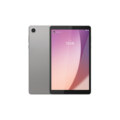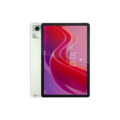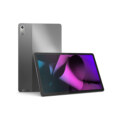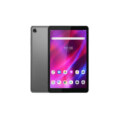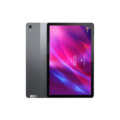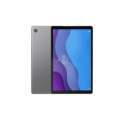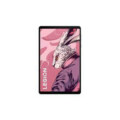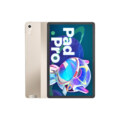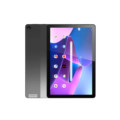Lenovo Yoga Tab 11
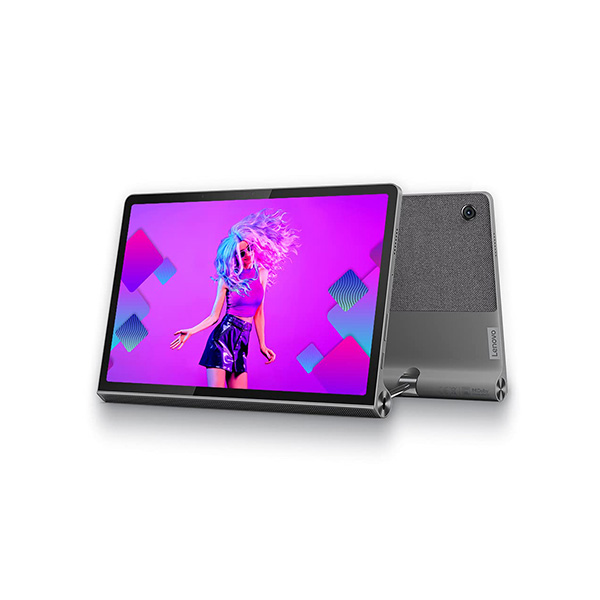

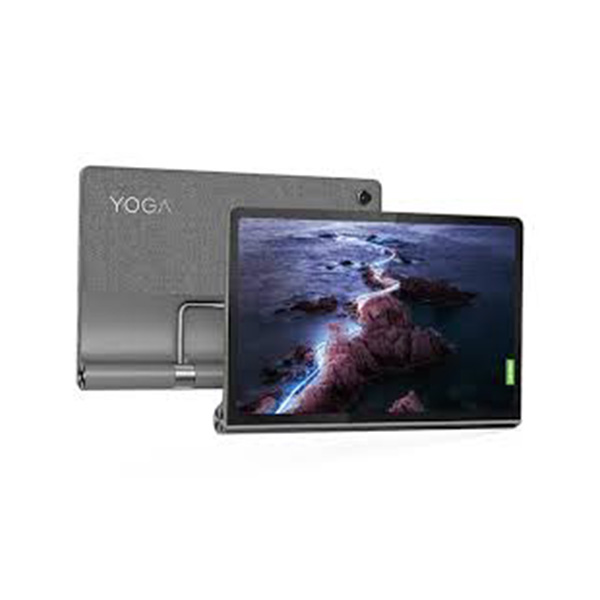
Specs
General
| Device Type | Lenovo |
| Model | Yoga Tab 11 |
| Announced | 28 June, 2021 |
| Status | Available |
Design
| Dimensions | 256.8 mm x 169 mm x 7.9-8.3 mm |
| Weight | 655 g |
| Protection | Glass front, aluminum frame, aluminum back |
| Colors | Storm Gray |
Display
| Refresh Rate | 90 Hz |
| Display Type Display Technology => A number of display technologies and types used in mobile phones => TFT (Thin Film Transistor), IPS (In-Place Switching), OLED (Organic Light Emitting Diode), AMOLED (Active-Matrix Organic Light-Emitting Diode), Super AMOLED (an even advanced version of AMOLED), Resistive Touchscreen (Resistive touchscreens contain two layer of conductive material with a very small gap between them which acts as a resistance), Capacitive Touchsceen (Capacitive touchscreen technology consists of a layer of glass coated with a transparent conductor) | IPS LCD |
| Size | 11.0 inches |
| Resolution | 1200 x 2000 pixels |
| Pixel Density Pixel Density (PPI) is refers to the concentration of pixels on a particular display, measured in pixels per inch (ppi). Pixel density is calculated by dividing the diagonal pixel resolution of a display by its diagonal size, higher pixel density better display quality. | ~ 212 ppi |
| Touch Screen | Capacitive Touchscreen, Multi-touch |
| Secondary Display | No |
Camera
| Front Camera | 8 MP |
| Camera Setup | Single |
| Main Camera Camera is able to capture photographs and usually videos, The most important characteristics of a camera are the resolution (measured in megapixels), lens focus type (fixed or automatic), higher megapixel cameras are known to capture higher quality photos, but not always a good measurement of the photos quality. | 8 MP, AF |
| Video | 1080p@30fps |
| Camera Features | HDR |
Hardware
| Operating System OS => Every computer system run on a base software called Operating System (OS). Operating System controls all basic operations of the computer (such as smartphone, PDAs, tablet computers and other handheld devices). The Operating System allows the user to install and run third party applications (apps), apps are used to add new functionality to the device. | Android 11 |
| Chipset Chipset is a group of integrated circuits designed to perform one or a more dedicated functions, often with real time computing constraints, Popular smartphones are equipped with more advanced embedded chipsets that can do many different tasks depending on their programming. | Mediatek Helio G90T |
| CPU CPU (Central Processing Unit) mostly known as processors, CPU processes instructions in order to carry out certain functions that make your device operate properly. Processors are often described as the brain of computers, smartphones and tablets, Smartphones and tablets rely on processors to carry out their every task, Processors are an incredibly important factor in selecting any type of computing device, including your smartphone. | Octa-core (2x2.05 GHz Cortex-A76 & 6x2.0 GHz Cortex-A55) |
| Architecture | 64 bit |
| Fabrication | 12 nm |
| GPU GPU (Graphics Processing Unit) is a single-chip processor designed to rapidly manipulate and alter memory to accelerate the creation of images in a frame buffer intended for output to a display, This includes things such as lighting effects, object transformations, and 3D motion. | Mali-G76 MC4 |
| RAM (Memory) RAM (Random Access Memory) is a type of computer memory that can be accessed randomly, any byte of memory can be accessed without touching the preceding bytes that allows information to be stored and accessed quickly from random locations. RAM is the most common type of memory found in computer systems, smartphones, tablets and other electronic devices. | 4GB RAM, 8GB RAM |
| Internal Storage Internal Storage is a data storage space (flash memory) mostly used in smartphones, tablets and other electronic devices where operating system, apps, music, photos, videos, files and other user data Is stored. | 128GB / 256GB Built-in |
| Card Slot Memory Card Slot is a special slot for inserting a memory card. Memory cards allow you to expand the phone's built-in memory, A memory card (sometimes called a flash memory card or a storage card) is a small storage medium used to store data such as text, pictures, audio, and video, for use on small, portable or remote computing devices such as mobile phones, mp3 players, digital cameras. | |
| Sensors Sensors are electronic components that detects and responds to some type of input from the physical environment. The specific input could be light, heat, motion, moisture, pressure and location, The output is generally a signal that is converted to use in computing systems, a location sensor, such as a GPS receiver is able to detect current location of your electronic device. | Face recognition, accelerometer, gyro |
Network
| SIM TYPE SIM (Subscriber Identity Module) is a small card that contains mobile network subscriber's account information. This allows the phone using the card to attach to a mobile network. The SIM card is most commonly associated with GSM and UMTS mobile networks. Moving a SIM card from one phone to another allows a subscriber to switch mobile phones without having to contact their mobile network carrier. SIM cards can also be used by a phone to store limited amounts of data, such as phone numbers and text messages. | Nano SIM |
| SIM Technology | GSM / HSPA / LTE |
| 2G Network | GSM 850 / 900 / 1800 / 1900 |
| 3G Network | HSDPA 800 / 850 / 900 / 1900 / 2100 |
| 4G Network | LTE |
Connectivity
| Wi-fi Wi-Fi is a popular wireless networking technology using radio waves to provide high-speed network connections that allows devices to communicate without cords or cables, Wi-Fi is increasingly becoming the preferred mode of internet connectivity all over the world. | Wi-Fi 802.11 a/b/g/n/ac, dual-band, Wi-Fi Direct |
| Bluetooth Bluetooth is a wireless communications technology for exchanging data between mobile phones, headsets, computers and other network devices over short distances without wires, Bluetooth technology was primarily designed to support simple wireless networking of personal consumer devices. | 5.0, A2DP, LE |
| GPS GPS The Global Positioning System is a satellite-based radio navigation system, GPS permits users to determine their position, velocity and the time 24 hours a day, in all weather, anywhere in the world, In order to locate your position, your device or GPS receiver must have a clear view of the sky. | GPS, GLONASS, BDS |
| USB | USB Type-C 2.0 |
| EDGE EDGE (Enhanced Data GSM Environment) is a wireless network technology generally considered the next step in the 2G network offers data transfer rates up to four times faster than ordinary GSM networks, Generally, EDGE is used for the purpose of wireless data transfer, such as sharing pictures and videos or browsing the Internet via a mobile phone connection. | |
| GPRS GPRS (General Packet Radio Service) is a packet oriented mobile data service on the 2G and 3G cellular communication system's global system for mobile communications (GSM), Generally, GPRS is used for the purpose of wireless data transfer, such as sharing pictures and videos or browsing the Internet via a mobile phone connection. | |
| Speed | HSPA, LTE |
| Wi-fi Hotspot | |
| NFC NFC (Near field communication) is a set of standards for smartphones and similar devices to establish peer-to-peer radio communications with each other by touching them together or bringing them into proximity, usually no more than a few inches. |
Multimedia
| FM Radio | |
| Stereo Speakers | YES |
| Loudspeaker | YES |
| Audio Jack | NO |
| Audio Features | Tuned by JBL |
Features
| Messaging | SMS(threaded view), MMS, Email, Push Mail, IM |
| Web Browser Web Browser => a web browser is a software application used to locate, retrieve and display content on the World Wide Web, including Web pages, images, video and other files, The primary function of a web browser is to render HTML, the code used to design or markup webpages. | HTML5 |
| Games | Built-in + Downloadable |
| Torch |
Battery
| Battery Type Battery Type => Cell phones run on various kinds of batteries depending on the manufacturer, phone size or shape and features. There are basically four types of cell phone batteries => Lithium Polymer, Lithium Ion, Nickel Metal Hydride and Nickel Cadmium. | Li-Po |
| Capacity Battery Capacity is a measure (typically in Amp-hr) of the charge stored by the battery, and is determined by the mass of active material contained in the battery. The battery capacity represents the maximum amount of energy that can be extracted from the battery under certain conditions. | 7700 mAh |
| Placement | Non-removable |
| Wireless Charging Wireless Charging (Inductive Charging) uses an electromagnetic field to transfer energy between two objects. This is usually done with a charging station. Energy is sent through an inductive coupling to an electrical device, which can then use that energy to charge batteries or run the device. | No |
| Extra | 20W wired |
Lenovo Yoga Tab 11 Review: A Versatile Tablet for Entertainment and Productivity
The Lenovo Yoga Tab 11 is a standout device in the tablet market, boasting a combination of portability, power, and versatility. With its unique design, impressive display, and a suite of features tailored for both entertainment and productivity, it caters to a wide range of users. Let’s dive into the details of the Yoga Tab 11, covering its design, display, performance, camera, battery life, software, and more.
Design
The Lenovo Yoga Tab 11 features a sleek and innovative design that sets it apart from traditional tablets. It has a cylindrical hinge that not only adds a distinctive look but also enhances functionality. This hinge allows the tablet to stand in multiple orientations, making it easy to watch videos, browse the web, or type.
- Build Quality: The tablet is constructed with a premium aluminum chassis, giving it a robust feel while remaining lightweight for portability.
- Color Options: It is available in various colors, including Storm Gray, providing a modern aesthetic.
- Portability: Weighing just 1.0 kg (approximately 2.2 lbs), the Yoga Tab 11 is easy to carry, making it an excellent option for on-the-go usage.
Display
The display of the Yoga Tab 11 is one of its most impressive features.
- Size and Resolution: It boasts an 11-inch IPS LCD panel with a resolution of 2000 x 1200 pixels. This provides sharp visuals and vibrant colors, perfect for streaming content and playing games.
- Brightness and Viewing Angles: With a brightness of up to 400 nits, the display is bright enough for outdoor use. The wide viewing angles ensure that colors remain consistent from different perspectives.
- Screen-to-Body Ratio: The thin bezels around the display enhance the immersive experience when watching movies or playing games.
Performance
Under the hood, the Yoga Tab 11 is powered by the MediaTek Helio G90T processor, coupled with up to 8GB of RAM. This combination offers smooth performance for a range of tasks.
- Multi-Tasking: Users can easily switch between apps, stream videos, and even run light productivity tasks without experiencing significant slowdowns.
- Gaming: The tablet handles casual gaming well, thanks to its GPU capabilities. While it may struggle with the most demanding games, it performs admirably for mid-range titles.
- Storage Options: The Yoga Tab 11 is available in different storage configurations (up to 256GB), with support for expandable storage via microSD card, allowing users to store plenty of apps, games, and media.
Camera
While tablets are not primarily known for their camera capabilities, the Yoga Tab 11 offers adequate options.
- Rear Camera: The 8MP rear camera is suitable for quick snaps and scanning documents but lacks advanced features found in high-end smartphones.
- Front Camera: The 8MP front-facing camera is decent for video calls and conferences, making it a good choice for remote work or virtual meetings.
Battery Life
Battery performance is a crucial factor for any tablet, and the Yoga Tab 11 excels in this area.
- Capacity: It houses a 7500mAh battery, providing up to 15 hours of usage on a single charge, depending on usage patterns.
- Charging: The tablet supports 20W fast charging, ensuring minimal downtime between uses.
Software
The Lenovo Yoga Tab 11 runs on Android 11, offering a user-friendly interface with plenty of customization options.
- User Interface: The software experience is smooth, with Lenovo’s custom UI enhancements that improve usability. Features like split-screen multitasking and Picture-in-Picture mode enhance productivity.
- Pre-installed Apps: Users will find several pre-installed apps tailored for entertainment, such as Netflix and YouTube, along with productivity tools.
Pros and Cons
Pros
- Unique Design: The cylindrical hinge and versatile stand make it a great option for various activities.
- Impressive Display: Bright and vibrant screen ideal for media consumption.
- Long Battery Life: Up to 15 hours of usage, perfect for travel or extended sessions.
- Solid Performance: Capable of handling everyday tasks and casual gaming.
Cons
- Camera Quality: Average camera performance compared to smartphones.
- Limited High-End Gaming: May struggle with graphically demanding games.
- Software Updates: Android updates may be slower compared to other brands.

Conclusion
The Lenovo Yoga Tab 11 is a well-rounded tablet that excels in design, display quality, and battery life, making it an excellent choice for both entertainment and productivity. Whether you’re binge-watching your favorite shows, working on a project, or simply browsing the web, the Yoga Tab 11 provides a versatile platform to meet your needs. With its unique features and solid performance, it’s a worthy contender in the competitive tablet market.
Review
Disclaimer Note
All prices in Pakistan is updated daily from the price list provided by local shops and dealers but we can not guarantee that the information / price on this page is 100% correct (Human error is possible), always visit your local shop for exact cell phone cost & rate.
